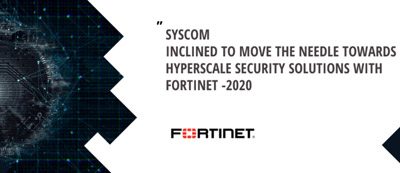


Many industries have embraced hyperscale computing to address a variety of different use cases. For example, large enterprises building hybrid IT architectures to launch applications quickly require super-fast communication between assets that are spread across physical and virtual domains. Advanced research institutions, such as those performing genomic or aerospace research, require the ability to transfer massive datasets over their networks.
Most of the Ecommerce companies, including high-velocity eRetail, use hyperscale architectures to manage connection bursts on major shopping holidays like Cyber Monday, and to deal with surges in activity resulting from the COVID-19 pandemic.
Digital innovation (DI) initiatives and business demands have changed how enterprise data centers are used and the performance metrics they must meet. Adapting to the demand for new network capabilities has driven the evolution of hyperscale data centers.
A hyperscale data center is one that scales efficiently and performs dynamically to meet escalating business demands. Hyperscale architectures are designed to meet unprecedented requirements for enormous capacity and astronomical performance. These demands can vary from industry to industry.
Examples of activities that require hyperscale architectures include:
Large enterprises including cloud service providers: Organizations using virtualization to create massively scalable virtual networks require large-scale network segmentations based on Virtual Extensible Local-Area Networks (VXLANs) and fast communications between services that are co-hosted on physical and virtual platforms.
Dynamic ecommerce including high-velocity eRetail: Event-based connection bursts, such as shopping holidays, online tax filing, and filing for unemployment benefits, require the ability to handle massive numbers of user connections per second.
Advanced research of pharmaceuticals, oil and gas, and aerospace: The use of big data and machine-learning (ML) algorithms for advanced research requires the ability to transmit 40 Gbps and 100 Gbps “elephant flows.
Stock exchanges: Electronic trading infrastructure requires that market data be received with the lowest possible latency.
Massive, global technology companies: High-speed data-centre interconnects between cloud data centers to replicate data across disaster recovery (DR) sites require high-speed interfaces and high-throughput IPsec tunneling capabilities to achieve data privacy and confidentiality.
FortiGate 4400F is the Only Firewall Capable of Securing Hyperscale Data Centers and 5G Networks, Delivering the Industry’s Highest Performance with Security Compute Ratings of up to 13x. Click for more information.

While many organizations have deployed hyperscale network architecture, achieving hyperscale security is more of a challenge. Disabling NGFWs or placing them in monitoring mode, to eliminate network bottlenecks, leaves an organization open to attack and potentially out of compliance with data protection regulations. Not segmenting applications and IT infrastructure opens the opportunity for an intruder to enter and reach the core of the network after penetrating the edge. And these dangerous results compound even more if the attacks originate from internal and trusted users.
Hyperscale data centers require a completely radical approach to security solutions, one that can scale with escalating business demands. Unless a hyperscale security solution can handle massive user connections at scale, process tens of millions of connections per second, support 100 Gbps elephant flows, efficiently segment massive virtual environments, protect the enterprise edge with high performance, essential Layer 4 security, and prevent DDoS attacks, all bets are off and tilt the advantage toward attackers aiming to launch various cyberattacks to disrupt the business, cause bad press, and eventually shut down operations.
